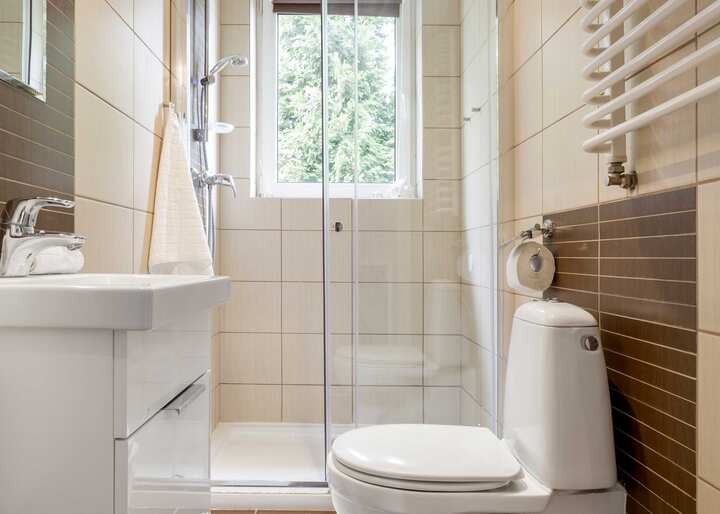
Your Guide to Toilet Installations
Toilet installation is an essential part of any bathroom renovation or new construction project. A properly installed toilet not only adds functionality to your bathroom but also enhances its overall appearance. However, for many homeowners, the thought of installing a toilet can be overwhelming. In this blog post, we aim to simplify the process by explaining it step-by-step. From selecting the right type of toilet to preparing the site and connecting the fixtures, we'll guide you every step of the way.
How Toilets Work
A toilet consists of a bowl, a tank, and a mechanism for flushing. The bowl is the part of the toilet you sit on and is connected to a drain pipe leading to the sewer or septic system. The tank is the toilet part that holds the water used for flushing. When you flush the toilet, the water in the tank is released and flows into the bowl through a flush valve. This causes the waste in the bowl to be washed down the drain and into the sewer or septic system. The flushing mechanism is controlled by a handle or a button that, when pressed, opens the flush valve and releases the water.Toilet Types
One-Piece Toilets
A one-piece toilet is a single unit that includes both the toilet bowl and tank. These toilets are sleek and modern in appearance, and they are easy to clean. They are also less likely to leak between the bowl and tank, as there is no seam.Two-Piece Toilets
A two-piece toilet comprises two separate pieces: the toilet bowl and the tank. These toilets are the most common type and are often less expensive than one-piece toilets. They are also easier to repair, as the bowl and tank can be replaced separately.Gravity-Flush Toilet
A gravity-flush toilet uses the force of gravity to flush waste and water out of the bowl and into the sewer or septic system. This is achieved by a flapper valve at the bottom of the toilet tank that opens to release water into the bowl when the flush lever is pressed. The water then flows through the bowl and out of the toilet through the waste pipe, pulling the waste with it.Wall-Hung Toilets
A wall-hung toilet is mounted to the wall, with the tank and flush mechanism concealed inside the wall. This type of toilet is a great space-saver and easy to clean. Wall-hung toilets are more expensive than traditional toilets and require a more intensive installation process.Corner Toilets
Corner toilets are designed to fit into tight spaces and are perfect for small bathrooms. They are similar to two-piece toilets but are designed with a special shape to fit into a corner.Up-flush Toilets
An up-flush toilet is a type of toilet installed in a basement or an area where a traditional gravity-based toilet cannot be installed. These toilets use a pump to flush waste upward into a sewage or septic system rather than relying on gravity.Dual-Flush Toilets
A dual-flush toilet has two flush options: one for liquid waste and one for solid waste. This allows for more efficient water use and can save money on utility bills.Low-Flow Toilets
A low-flow toilet is designed to use less water than a traditional toilet. They use 1.6 gallons of water per flush or less, which can help to conserve water and lower utility bills.Smart Toilets
A smart toilet is a high-tech toilet equipped with advanced features such as a bidet, remote control operation, and even a built-in air purification system. These toilets are more expensive than traditional toilets but offer added convenience and luxury.Step-By-Step Toilet Installation Process
Here is the detailed process required to install the toilet:Step 1: Prepare the Area
The first step in installing a toilet is to prepare the area. This means removing the old toilet, if there is one, and cleaning the area thoroughly. Use a putty knife to remove old wax from the flange and ensure the area is free of debris.Step 2: Install the Flange
The flange is a circular piece of plastic or metal that sits on top of the drain pipe and provides a secure connection point for the toilet. If the flange is already in place, ensure it is level and in good condition. Put down some shims to get it level if it's not. It may need to be replaced if it gets damaged.Step 3: Apply the Wax Ring
The wax ring is a wax that sits between the bottom of the toilet and the top of the flange. It creates a seal to prevent leaks. To apply the wax ring, press it onto the bottom of the toilet, making sure it is centered.Step 4: Place the Toilet
Once the wax ring is in place, it's time to place the toilet onto the flange. Carefully lower the toilet onto the flange, ensuring the wax ring is compressed evenly. Use a level to ensure the toilet is level and plumb, and adjust as necessary.Step 5: Secure the Toilet
With the toilet in place, it's time to secure it to the flange. Use the toilet bolt set to attach the toilet to the flange. Tighten the bolts evenly to ensure a secure connection.Step 6: Connect the Water Supply
The final step in installing a toilet is to connect the water supply line. This is typically a flexible hose connecting to the toilet's bottom and the water supply valve. Use Teflon tape to seal the connection and turn on the water supply to test for leaks.